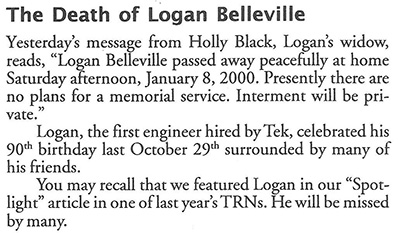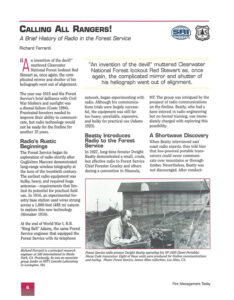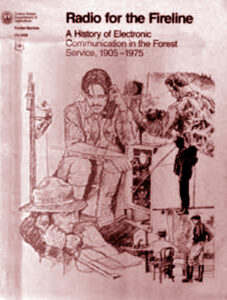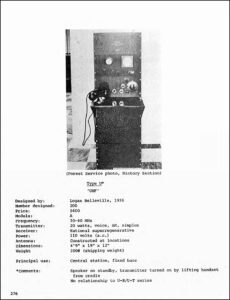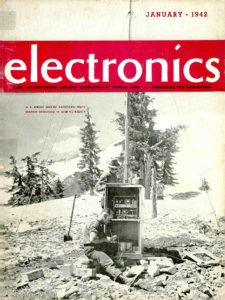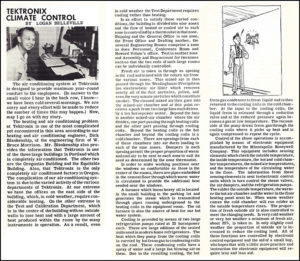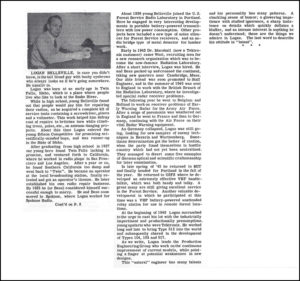Logan Belleville was Tek’s second electronics engineer. Born in 1909, he grew up in Twin Falls, Idaho, where he developed a keen interest in science in general, and radio technology in particular. Like Jack Murdock and Howard Vollum, he was known to his teachers, neighbors and friends as a young man who could service a radio, a skill in high demand since early commercial sets required regular maintenance and repair. While still in school he sought a prestigious Thomas Edison scholarship and placed second in the state of Idaho. The museum has several of the letters of recommendation he received. These are found below.
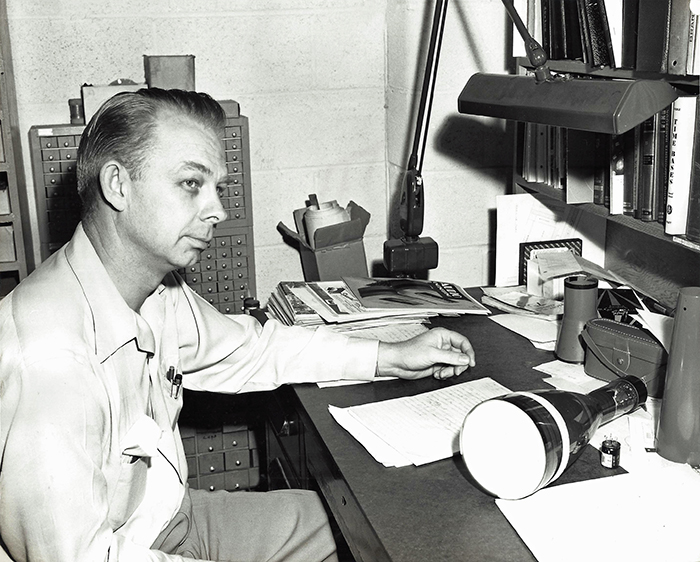
Logan continued to hone his skills and eventually joined a radio design team established by the US Forest Service in Vancouver, Washington. Dating before the turn of the 20th century, the Forest Service had an extensive interest in making use of long-range communications to assist in locating and fighting fires. As wireless technology evolved after World War I the USFS sought radios that were portable, rugged and could be used over significant distance in dense forest and mountainous terrain. Because their needs were demanding and specific, and the required unit volume demand was relatively low, they had trouble finding commercial vendors. The Forest Service Radio Development Laboratory was established to fill this gap, first in Tacoma and later in Vancouver, Washington. In 1932 Logan Belleville joined the small team of engineers in Vancouver. This facility was to become one of first contributors to what would be known as the Silicon Forest. This Calling All Rangers article in the Winter 2008 Fire Management Today provides a brief history of radio in the Forest Service. Click on the image to view the PDF.
During his time at the Forest Service lab, Logan designed at least four radio systems, including a remarkably compact, handheld “walkie-talkie” that replaced a bulky, backpack-sized radio. His efforts are described in three different chapters in the book Radio for the Fireline (USFS 1982) by Gary Craven Gray. Click on the image to view the PDF.
Appendix 1 shows photos, schematics, and data from the book for the radios developed by the USFS which includes those designed by Logan. Click on the image to view the PDF.
Later the Radio Development Lab hired an engineer who was to be a principal in the founding of the Silicon Forest, Douglas Strain. After World War II Strain became a partner in Portland’s Brown Electro-measurements Company, and eventually, he founded Electro Scientific Industries.
The Forest Service further contributed to sowing the seeds for the Silicon Forest by employing a Portland firm, Radio Specialties, to manufacture and repair the radios designed at the lab. After graduating from Reed College in 1935, Howard Vollum’s first job was with Radio Specialties where he built and repaired radios for the Oregon state forest service and the USFS. Howard later repaired commercial radios at a Sears store in East Portland and shortly thereafter took a similar job working for Jack Murdock, eventually leading to founding of Tektronix.
During World War II Logan Belleville was recruited to join the staff of the prestigious Radiation Lab at MIT in Cambridge MA. There, like Howard Vollum, he contributed to the development of radar systems in support of the war effort. Howard was stationed at Fort Evans in New Jersey, but while he spent a great deal of time at the Rad Lab, there is no record that Howard and Logan ever met at MIT. After his radar work in the states and later in Europe was completed, Logan returned to the U.S. Forest Service radio laboratory.
Logan and a colleague published an article describing one of their radio system designs that was featured as the cover story in Electronics in 1942. Logan is standing behind the radio cabinet on the cover. Click on the image to view the PDF.
The Forest Service chose to move their radio design facility to Maryland in 1948 and apparently not wanting to return to the East Coast, Logan took this as motivation to join a Portland startup called Tektronix. He was hired by Jack Murdock, joining the company to assist Howard. Belleville was one of the few early senior people at Tektronix who didn’t work with Jack in the Coast Guard during World War II.
Logan Belleville was initially assigned to implement upgrades to Tek’s first product, the Type 511 oscilloscope, as well the design of the Type 512 scope. Along with Howard and Richard Rhiger, he co-designed the 50 MHz Type 517, the fastest scope available for most of the 1950s. He also designed the Type 104 and 105 square wave generators. Logan was permitted to purchase an early equity position in the company and was seated on the Board of Directors. He eventually became manager of the Production Engineering Group.
A rift developed between Howard Vollum and Logan Belleville regarding Howard's revolutionary scope plug-in concept in the early 1950s. Howard felt it provided customer flexibility and added value, while Belleville believed the concept diluted quality and performance for the most demanding customers. His was a sort of 'jack of all trades but master of none' argument. Because of this and perhaps other factors, including his interest in returning to school to earn a Ph. D., Belleville decided to sell his Tektronix shares back to the company and leave in 1953.
This February 1952 TekTalk features an article by Logan on climate control at Tektronix. Click on the image to view the PDF.
This February 1953 TekTalk provides some insight into his background prior to Tektronix. Click on the image to view the PDF.
This July 1953 TekTalk announces Logan's retirement from Tektronix.
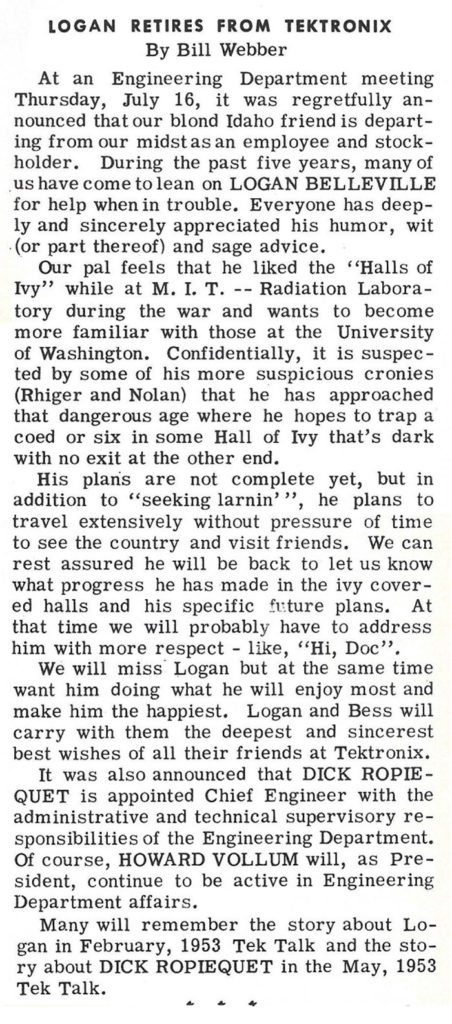
The museum has letters of recommendation written for Logan in 1929.
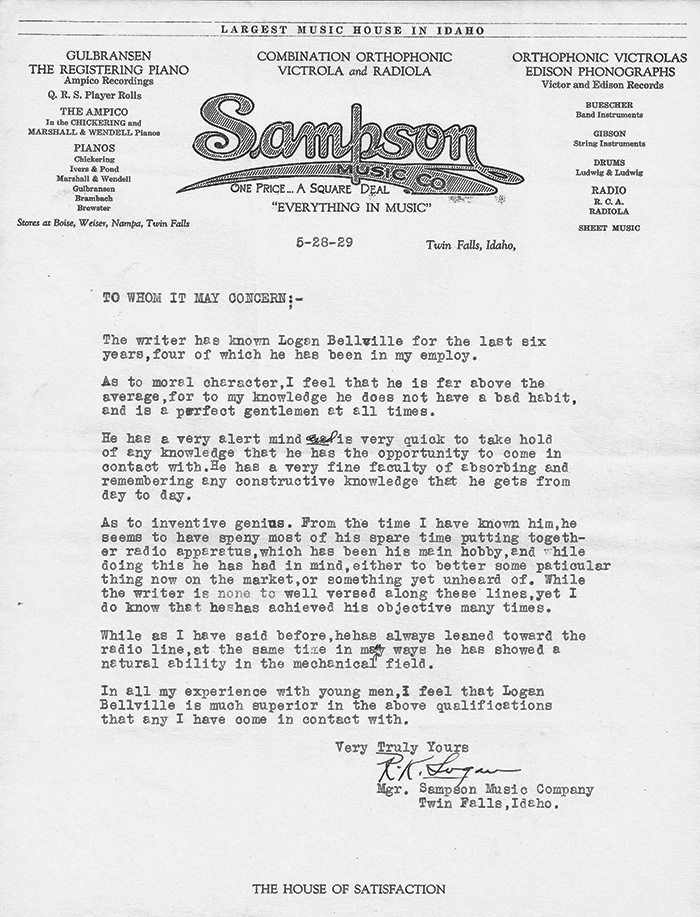
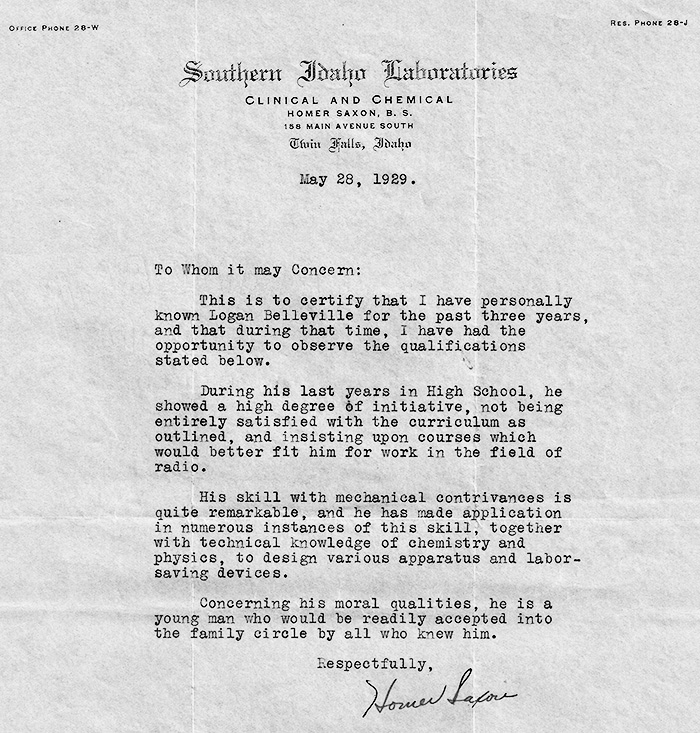
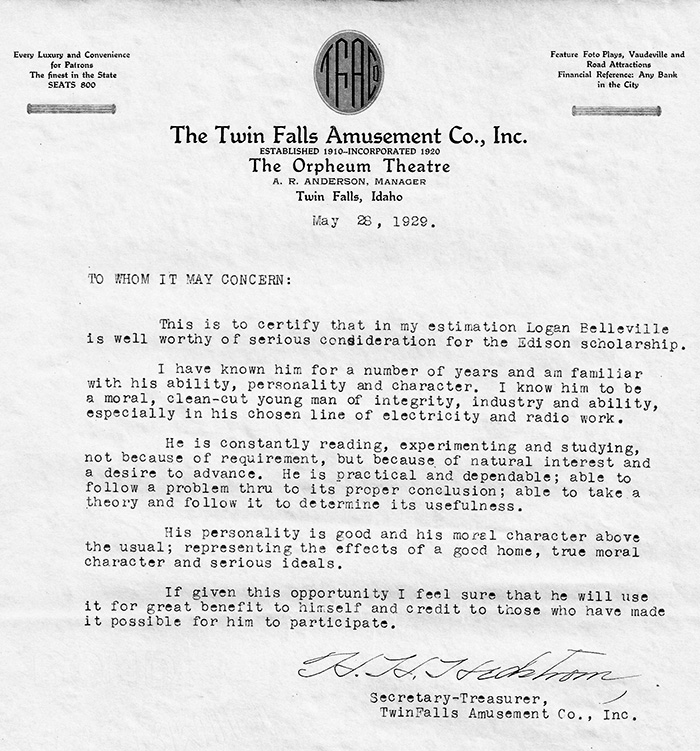
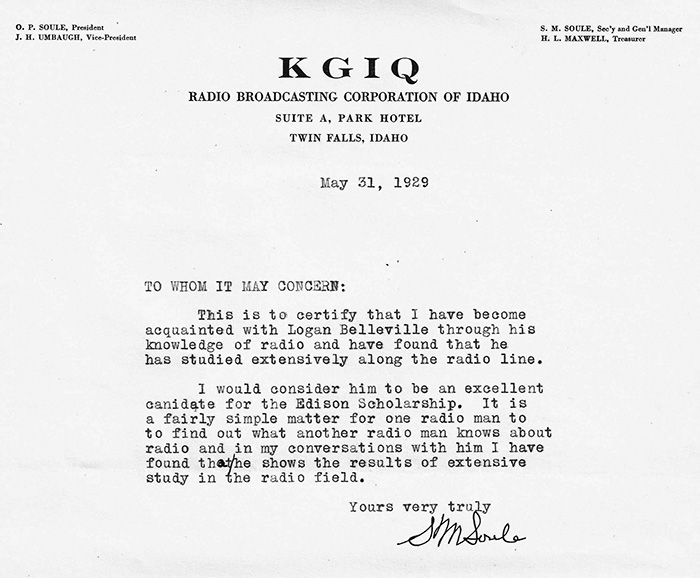
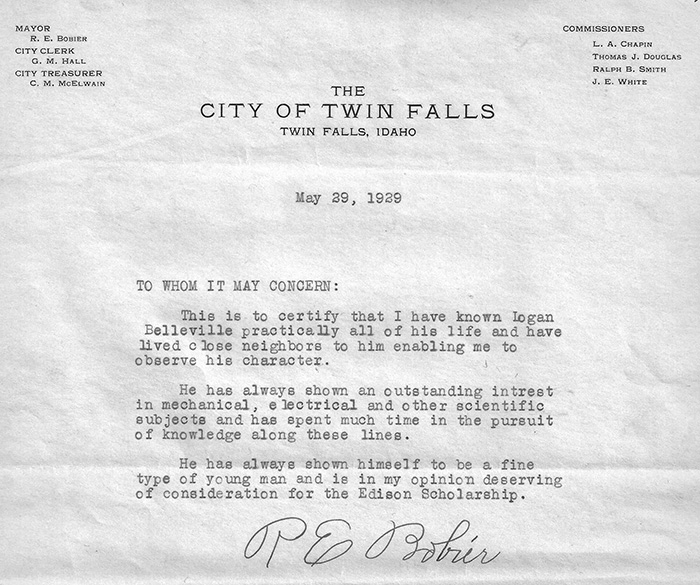
This article was in the Tektronix Retirees Volunteer Program September 1998 newsletter.
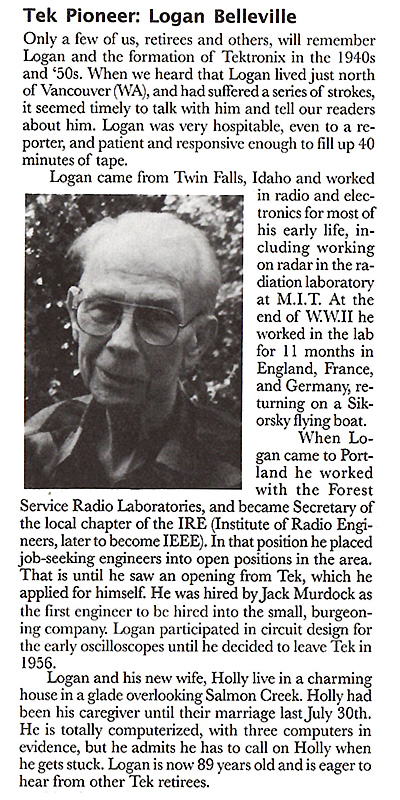
Logan died on January 8, 2000 at the age of 90. This notice was in the Tektronix Retirees Volunteer Program January 2000 newsletter.
